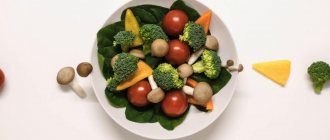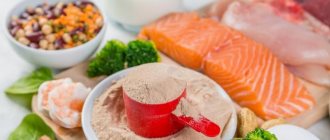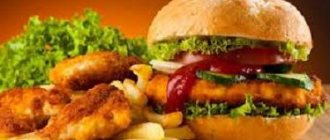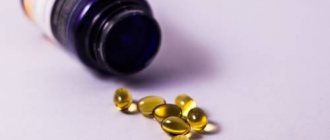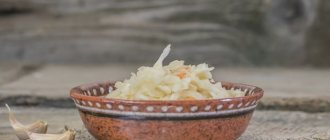Currently, teenage obesity is becoming no less urgent a problem, as is the generally threatening trend towards overweight gain by the world's population. To solve this issue, pediatricians have developed special diets for teenagers that will help normalize the weight of children without harmful consequences for health.
How to lose weight for a teenager without dieting?
People ignorant of medicine sometimes tend to think that the same food restrictions can work for their children as for them as adults, but this is completely wrong.
Adolescence is characterized by special processes occurring in the human body, for which incorrect approaches to nutrition can be detrimental. Scientists around the world spend years researching this complex issue in order to have the most complete understanding of the problem.
Therefore, before forcing your child to chew carrots in the hope that he will lose extra pounds in a week, be sure to consult a pediatrician. Based on medical indications, the doctor will recommend the most suitable diet for the teenager.
However, there are a number of general recommendations that will allow you to more clearly understand what healthy eating for teenagers is even before visiting a doctor.
Reasons for gaining excess weight
To date, scientists have uncovered several reasons why children suddenly gain weight between the ages of 12 and 16. Moreover, it turned out that these factors change depending on the gender of the child.
Hormones
Thus, teenage girls begin to grow in breadth by leaps and bounds, due to serious hormonal changes occurring in their bodies during this period. In fact, they turn from girls into girls, which is characterized by the active production of estrogen.
How many calories does a teenage girl need per day?
The diet menu for boys and girls is formed differently.
- So, for girls, half of the daily diet should consist of foods rich in complex carbohydrates, another 30% should be allocated to fats, and the remaining 20% to proteins. A large number of carbohydrates are necessary for the growing body of a future woman to produce the required amount of estrogen.
- But for boys, on the contrary, it is better to increase the proportion of proteins by reducing fat. This is necessary because they are naturally more mobile, and their muscles develop faster, and it is also necessary for the production of the male hormone - testosterone. Therefore, boys can have 30% proteins and 20% fats, and leave carbohydrates at the same level as in the case of diets for girls.
- At the same time, if a teenager is actively involved in sports, then keep in mind that his calorie needs will be 20% higher than the total daily requirement. But try to “gain” these percentages in favor of protein and carbohydrates rather than fats.
Moreover, unlike various diets that dictate what you need to eat in the near future, this approach will not be financially burdensome for you. On the contrary, if you exclude unhealthy snacks and sweets from your teenager’s menu, this will even allow you to save a little.
Also, one of the main advantages of this diet is that the result will be long-term slimness, and not quick weight loss. Dramatic weight loss seems like a tempting prospect, but in reality it can lead to chronic health problems for a teenager.
If you choose the right foods for a healthy diet, it will even help strengthen your child's bones and muscles.
depending on her age and activity level.
The right approach to losing weight for a teenager
To develop a suitable diet for a teenager, it is necessary to make fundamental changes in the daily menu based on proper nutrition.
No strict diets! In no case should a growing body suddenly cut back on food. The menu should be varied and balanced.
Many doctors agree that in the case of teenagers, it is important during a diet not so much to reduce weight as to prevent its further increase. The child will grow, stretch out, and eventually the weight will return to normal.
If you are not sure that your child has problems with body weight, do not rush to make calculations suitable for an adult, when 110 is subtracted from height in centimeters. With children, this approach simply does not work.
Pediatricians calculate the correct, healthy weight of a child, taking into account not only height, but also age, as well as gender.
To see if your child has a weight problem, look at the table showing normal weight levels for children and teenagers.
| Age | Girls Height, cm and Weight, kg | Boys Height, cm and Weight, kg | ||
| 12 | 145-154 | 36-45 | 143-154 | 34-45 |
| 13 | 151-159 | 43-52 | 149-160 | 38-50 |
| 14 | 115-163 | 48-58 | 156-167 | 43-56 |
| 15 | 157-166 | 50,5-60 | 162-173 | 48-63 |
| 16 | 158-166 | 52-61 | 167-178 | 54-69 |
To encourage your teen to normalize their body weight, calculate the caloric content of their normal diet before developing a new healthy diet menu. You can subtract 20–25% from the resulting figure. It is permissible to reduce a teenager’s usual energy value by only a quarter.
How many calories does a teenage boy need per day?
Depending on his age and how active his lifestyle is.
AgeSedentaryModerately activeActive13 years2000 kcal2200 kcal2600 kcal14 years2000 kcal2400 kcal2800 kcal15 years2200 kcal2600 kcal3000 kcal16 years2400 kcal2800 kcal3200 kcal17 years2400 kcal2800 kcal3200 kcal18 years 2400 kcal2800 kcal3200 kcalThere is no need to starve on a diet!
A pleasant aspect of the menu designed for teenagers is that it is varied and nutritious food without excessive prohibitions. On such a diet, even sweets are allowed, but in small quantities and in the first half of the day.
Everything is aimed at making the child on a diet feel as comfortable and calm as possible. Once the menu becomes balanced and healthy, the metabolism, which works better in teenagers than in adults, will take precedence over fat deposits.
Here are key tips to help speed up the process.
- Drink one and a half liters of clean water a day.
- Fractional meals - 5 times a day.
- Walking in the fresh air - an hour every day.
- Refusal of fast food and snacks.
Assume that a teenager on a diet should have three full meals, as well as two snacks - a second breakfast and an afternoon snack. Serving sizes for main meals should be approximately 250 grams.
Fresh fruits are good for snacks, and for an afternoon snack you can give your child tea or compote with a few candies or cookies.
Advice from nutritionist Irina Shilina Healthy eating is incompatible with strict dietary restrictions, malnutrition and prolonged fasting. There is no need to strive for abnormal thinness by depriving yourself of food that brings pleasure. Pay attention to the latest weight loss techniques. Read more about healthy eating ->
Healthy breakfast
Breakfast has long been considered the most important meal of the day during a diet, when it is necessary to properly load the body so that it has enough energy for a fruitful day.
The best menu for teenagers is porridge: oatmeal or buckwheat.
- You can cook oatmeal in milk and add dried fruits and honey to it, which will sweeten the dish without using sugar.
- But buckwheat can be served as usual, or you can add milk to it.
An omelet or scrambled egg fried with tomatoes and bell peppers is also good. Also, if time permits, you can bake cottage cheese casserole with raisins in the oven or prepare cottage cheese pancakes with honey.
To any of the dishes of this diet you should add unsweetened tea or drinking yogurt, as well as one banana. This fruit is quite high in calories, but in the morning it can energize you no worse, and maybe even better, than coffee.
For a young athlete who needs a lot of protein, a healthier breakfast consists of boiled chicken fillet with buckwheat and one boiled egg.
Lunch without overeating
A couple of hours after breakfast, you need the child to eat any fruit - the only exception is grapes, the calorie content of which is in no way suitable for the diet.
- For lunch, be sure to include a hot dish: soup, lean borscht, cabbage soup, chicken broth, and so on. Don't forget about bread - up to two pieces of black rye.
- For the second course, boiled lean meat or fish is perfect. If a teenager does not like them boiled, then it is permissible to bake them in the oven, but under no circumstances should the food be fried.
- As a side dish, it is better to give preference to fresh seasonal vegetables, which are good to cut into a salad: tomatoes, cucumbers, radishes, white cabbage, onions, greens, beets, and so on. If desired, you can also make a vinaigrette.
- For dessert, serve your child tea or compote with a few cubes of dark chocolate - no more than 25 grams.
Afternoon snack and dinner
The best option for an afternoon snack during a diet would be children's cottage cheese or yogurt, as well as one apple. If the teenager does not get enough of this, it is permissible to give him another piece of rye bread.
- Dinner, which should take place no later than three hours before going to bed, is the lightest of the main meals.
- You shouldn’t overload your stomach at night, so in the evening it’s good to serve (your choice): low-fat cottage cheese with fruit, a piece of fish baked in foil with a tomato, fresh vegetable salad, kefir or drinking yogurt.
- It is also permissible to wash down the dish selected from the list with green tea.
You can choose any other convenient diet option based on healthy eating for teenagers. The main thing is that it contains normal proportions of fats, proteins and carbohydrates.
Basic products necessary for a teenager
In any case, the daily diet must contain proteins, fats and carbohydrates in a ratio of 1:1:4:
- first, it is important to select about 2-2.5 grams per 1 kilogram of weight (and select proteins from animals for half this amount);
- include the second component in the amount of about 100 grams (and let 70% of the fats come from plants - the corresponding oils, and the rest from animals - sour cream, butter);
- the third component of the diet include about 10-15 grams per kilogram of weight (porridge from cereals, vegetables, greens, grains, legumes, berries);
- liquid - 50 ml per kg of weight in the form of mineral waters (gas is not welcome), decoctions, juices, compotes, tea.
Here is a table to help you out showing how much protein (number of grams) is present in 100 grams of the following foods.
At 14-16 years old, increased appetite is more than normal. And you shouldn’t limit your growing body’s diet. The daily amount of calories for both a guy and a girl is at least 3000 kcal, and when playing sports - 3500-4000 kcal. And the correct approach to eating for teenagers involves dividing meals into 4-5 meals.
Healthy menu for clear, acne-free skin
Another trouble that becomes a constant companion of the so-called adolescence is a skin problem.
- At best, it pesters a teenager at the moment of a hormonal surge, mainly for girls during menstruation.
- And in the worst case, hated pimples and blackheads cover not only the poor man’s face, but also his back and arms.
Coupled with visually noticeable excess weight, this will create a whole range of moral problems even for an adult, let alone a teenager with an active psyche.
This business cannot be neglected and the solution to the problem is also a special diet that will allow you to kill two birds with one stone: lose extra pounds and tidy up your skin.
- Experts advise creating a daily menu for teenagers in such a way that it is dominated by fermented milk products and cereals, lean meats and fish, and fresh vegetables and fruits.
- It is imperative to maintain a drinking regime during the diet, since it is water that removes toxins from the body, which are the main cause of skin problems.
- At the same time, in order to get rid of acne (an inflammatory disease of the skin), you will have to radically cut back, or even temporarily give up baked goods, sugar and honey, fatty foods flavored with sauces and mayonnaise.
In tandem with skin care using special hygiene products, this will give visible positive results within a couple of weeks after switching to proper nutrition.
For a therapeutic diet, it is necessary to create a diet rich in a complex of special vitamins and microelements.
- In the fight for a clean face, you need to enlist the help of vitamins A, B and E, as well as foods rich in zinc, calcium, chromium and omega-3 fatty acids. The source of the latter is fish, especially its liver, as well as fish oil. In addition, there are quite a lot of them in flaxseed, which can be bought at any pharmacy and even in supermarkets.
- This will be an excellent alternative if the teenager does not like fish and, especially, its fat. Zinc, which is responsible for the proper functioning of the sebaceous glands, is found in great abundance in foods such as nuts and seeds, pork and beef liver, legumes, herring, asparagus, and so on. This element is extremely important because it inhibits the production of large amounts of sebum by the sebaceous glands in the skin.
- The easiest way to get group A vitamins is by eating carrots, cucumbers, spinach, black currants, apricots, pumpkin, viburnum, parsley, cream and butter (little by little), sorrel and much more.
- B vitamins are found in large quantities in black bread, which, unfortunately, is not recommended for use if you have skin problems. But do not be discouraged, since the content of B1 and other vitamins of this group is also high in the following products: white cabbage, buckwheat and wheat porridge, legumes, soybeans, kidneys, hard cheese.
- But group E is found in abundance in various nuts - from the familiar walnut to pistachios and almonds. But it is also not recommended for a teenager to lean too much on them, since, along with the undoubted benefits, they also bring a large amount of calories to the body, which defeats the main purpose of the diet.
Another helper in the fight against pimples and acne is brewer's yeast, as well as bran, in particular oat bran.
- Brewer's yeast stimulates the digestive tract and pancreas. The body will begin to naturally get rid of the toxins that led to acne.
- Bran also helps due to its cleansing properties - they are not absorbed by the body, and solid particles cleanse all excess from the walls of the stomach and intestines.
Harm and contraindications of diet for teenagers
It is very important for parents not to miss the moment when the child’s weight begins to exceed the norm, as this can lead to the development of serious diseases in the future. In the case of teenage girls, extra pounds even provoke menstrual irregularities, which can lead to problems with childbearing.
And if we talk about children of both sexes, obesity has a detrimental effect on the functioning of the heart muscle and vascular system. In addition, excess weight puts undue pressure on the still developing spine and joints.
At the same time, carefully monitor your child’s behavior, since girls in adolescence can make such serious and dangerous mistakes as indulging in mono-diets, fasting, or inducing vomiting after eating.
This can lead to serious eating disorders that are closely linked to psychological problems such as bulimia and anorexia.
In addition, following the wrong diet during adolescence poses a risk of stunted growth.
An equally unpleasant possible consequence of an unreasonable approach to the nutritional system can be vitamin deficiency, accompanied by dizziness, nausea and migraines.
A lack of the required amount of vitamins and minerals, which is caused by rigid ill-conceived diets, can lead to damage to teeth, hair and nail plates. This will ultimately add problems to an already upset child.
However, there are some cases when resorting to even a very gentle teenage diet is not recommended for medical reasons. These include:
- disorders of the gastrointestinal tract, including ulcers and gastritis;
- food allergies (intolerance to certain foods);
- colds in the acute phase;
- various chronic diseases;
- neurological diseases;
- diabetes;
- kidney and liver diseases;
- pancreatitis (inflammation of the pancreas).
In such cases, you should not engage in arbitrariness and regulate the menu yourself, but you should definitely seek qualified help from a pediatrician. The specialist will be able to take into account all the medical problems of the little patient and develop the most suitable diet for the teenager.
Another strict taboo is the age of the child: if he is under 12 years old, then weight loss diets cannot be prescribed!
Daily calorie needs for teenagers
The number of calories a child needs from food per day depends on three main factors:
- age
- floor
- How active is the teenager’s lifestyle?
If a child wants to gain weight, then he needs to consume more calories than normal, and vice versa: if he wants to lose weight, he needs to consume less.
The tables indicate the daily caloric intake1 that a healthy teenager needs depending on gender, age and lifestyle.
Diet menu for every day
What food must be on the diet menu?
- The main core of the diet for teenagers consists of fermented milk products, milk, and cereals.
- For bread products, give preference to bread with bran, yeast-free and whole grain.
- Try to gradually reduce the amount of salt and sugar in your dishes to a minimum. But do it slowly so that the child, and the whole family, do not notice a sharp change in the taste of the dishes during the diet.
- Also reduce the amount of hot spices that stimulate your appetite until completely eliminated from your diet.
- You can cook almost anything from vegetables, with the exception of potatoes. Although it is also good to add new potatoes in the spring and early summer to the diet menu, since they still contain useful microelements and do not add extra centimeters to the waist.
- If a child really loves pasta, then do not deprive him of this pleasure. Just choose products made from durum wheat and do not cook them often.
- Try to use olive oil as a salad dressing, but no more than a couple of tablespoons.
Losing weight will not be an easy process, but in the case of teenagers, diets work much more effectively due to the accelerated metabolism of the growing body. Therefore, the first excellent results will be noticeable within a week or two.
When the excess weight that worries you and your child the most goes away, just try not to change the healthy menu so that the whole family begins to form the habit of healthy eating. In the future, this will allow the teenager to constantly remain in good shape.
How to count calories?
To properly create a healthy diet for a child, you need to know that the daily calorie intake for a teenager is much higher than for an adult. The body is still in a state of growth, and therefore it needs more energy.
- For normal life, a girl must consume about 2–2.5 thousand kcal per day, and for a boy this figure increases to 3 thousand kcal.
- If a teenager is seriously overweight, then if he follows a diet, he should receive about 1800 kcal. This amount is considered safe for gradual weight loss.
Calculate your daily menu like this:
- so that breakfast accounts for 25% of the daily calorie intake;
- lunch consisted of 40%;
- snacks - 10% each;
- and there was 15% left for dinner.
In order for a healthy diet to be of any use, the mother will have to work hard, since under no circumstances should the child skip meals. It is very important to send your teenager to school well-fed.
If you don't have a lot of time to prepare special dishes, you can limit yourself to oatmeal or a boiled egg, to which add a couple of slices of brown bread, cheese and fruit.
Body water balance
Perhaps one of the most difficult aspects of switching to a healthy diet will be maintaining hydration. Not every one of us consumes the required one and a half to two liters of water a day every day, let alone our offspring. But getting used to this amount is not as difficult as it seems at first glance.
- Distribute the amount of daily fluid for your child so that in the morning, immediately waking up, he drinks a glass of clean water. This will put its gastrointestinal tract into operation, which is extremely important for the natural cleansing of the body.
- He should also drink a glass of water in the evening, but no later than a couple of hours before going to bed. Otherwise, in the morning he may wake up with swelling on his face.
- Morning and evening water intake is half a liter.
- The teenager can safely drink the remaining 1 liter during the day at school. To do this, just don’t forget to put in his backpack every day, in addition to fruit, also a liter bottle of non-carbonated mineral water.
Discuss with your teenager the current problem with his physique and enlist his support, because without good will the process cannot get off the ground. If at home you can still control what goes into your child’s mouth, then at school compliance with the diet will rest on his shoulders.
Therefore, you will have to agree with him so that he has a full lunch in the school cafeteria. Give him recommendations on what he should eat for his daily meals.
How many calories does a teenage girl need per day?
depending on her age and activity level.
AgeSedentaryModerately activeActive13 years1600 kcal2000 kcal2200 kcal14 years1800 kcal2000 kcal2400 kcal15 years1800 kcal2000 kcal2400 kcal16 years1800 kcal2000 kcal2400 kcal17 years1800 kcal2000 kcal2400 kcal18 years 1800 kcal2000 kcal2400 kcalWhat does it mean to have an active or inactive lifestyle for a teenager:
- With a sedentary lifestyle, all physical activity is reduced to ordinary everyday activities, and the teenager spends most of the day sitting or lying down and moves little.
- A moderately active lifestyle is one in which, in addition to normal routine activities, a teenager walks up to 5 km or walks (walks) for about an hour a day.
- An active lifestyle is considered if a person walks more than 5 km or 1 hour a day, does routine activities, does gymnastics, goes jogging or swims.
The table data is only an approximate standard that you can use as a guide. You can calculate the exact number of calories that your child needs together with your pediatrician. He will also give recommendations regarding a balanced diet and healthy diet that will be optimal for a teenager.
Now you know how many calories a teenager needs to get from food, depending on his age, gender and activity.
Estimated Calorie Needs per Day, by Age, Sex, and Physical Activity Level https://health.gov/dietaryguidelines/2015/guidelines/appendix-2/
How many kilocalories does a person need? The norm is determined based on the following data:
- basal metabolism is the expenditure on the vital functions of the body: breathing, digesting food, supplying organs with blood, and so on;
- daily expenditure on physical labor.
The Muffin Jeora formula will help you calculate the number of calories per day:
- OM for women = 6.26*(height in cm) 10*(weight in kg) - 5*(age in years) - 161;
- OM in men = 6.26*(height in cm) 10*(weight in kg) - 5*(age in years) 5, where (OM) is general metabolism.
Using this formula, you can calculate how many calories a person should consume per day to lose weight. To gain weight, a person needs to increase this indicator by 20%, to reduce body weight - reduce it by the same amount.





